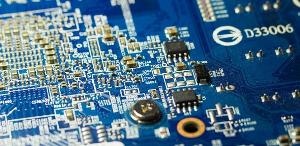Oct 21 2016
 Credit: University of Cambridge
Credit: University of Cambridge
Engineers at the University of Cambridge have developed a new, ultralow power transistor that operates by scavenging energy from their environment. This latest transistor could pave the way for new electronic applications such as implantable or wearable devices that can function continuously, for months or even years, without a battery by drawing energy from their environment. Devices based on this transistor can significantly reduce the amount of power used.
The new transistor uses a similar principle to a computer in sleep mode which involves harnessing a small ‘leakage’ of electrical current, called near-off-state current, for its operations. Similar to water dripping from a faulty tap, the leak is a characteristic of all transistors.
However, this is the first time where it has been captured and used effectively. This new breakthrough presents new opportunities for system design in the Internet of Things (IoT), where many things that we interact with on a daily a basis are linked to the Internet. The results of the study have been published in the Science journal.
Only low temperatures are required to produce these transistors, which can then be printed on almost all types of materials, ranging from paper and polyester to plastic and glass. The transistors are based on a special geometry that employs a ‘non-desirable’ characteristic, such as the point of contact between the semiconducting and metal parts of a transistor, a so-called ‘Schottky barrier.’
We’re challenging conventional perception of how a transistor should be. We’ve found that these Schottky barriers, which most engineers try to avoid, actually have the ideal characteristics for the type of ultralow power applications we’re looking at, such as wearable or implantable electronics for health monitoring.
Professor Arokia Nathan, Department of Engineering, University of Cambridge
The novel design addresses the main issues that have so far prevented the development of ultralow power transistors, such as the potential to create them at extremely small sizes. As transistors become increasingly smaller, their two electrodes begin to affect the behavior of one another and the voltages spread.
This means transistors will not operate effectively if they are produced below a specific size. By changing the transistor design, the Cambridge team was able to leverage the Schottky barriers to keep the electrodes separate from one another. This way, the transistors can be reduced to exceptionally small geometries.
In addition, the design accomplishes a high signal amplification or level of gain. The operating voltage of the transistor is less than a volt and power consumption is less than a billionth of a watt. This extremely low power consumption makes the transistors suitable for applications, where function is more critical and supersedes speed, which incidentally forms the core of the IoT.
If we were to draw energy from a typical AA battery based on this design, it would last for a billion years. Using the Schottky barrier allows us to keep the electrodes from interfering with each other in order to amplify the amplitude of the signal even at the state where the transistor is almost switched off.
Dr Sungsik Lee, Department of Engineering, University of Cambridge
“This will bring about a new design model for ultralow power sensor interfaces and analogue signal processing in wearable and implantable devices, all of which are critical for the Internet of Things,” said Nathan.
“This is an ingenious transistor concept,” said Professor Gehan Amaratunga, Head of the Electronics, Power and Energy Conversion Group at Cambridge’s Engineering Department. “This type of ultra-low power operation is a pre-requisite for many of the new ubiquitous electronics applications, where what matters is function – in essence ‘intelligence’ – without the demand for speed. In such applications the possibility of having totally autonomous electronics now becomes a possibility. The system can rely on harvesting background energy from the environment for very long term operation, which is akin to organisms such as bacteria in biology.”